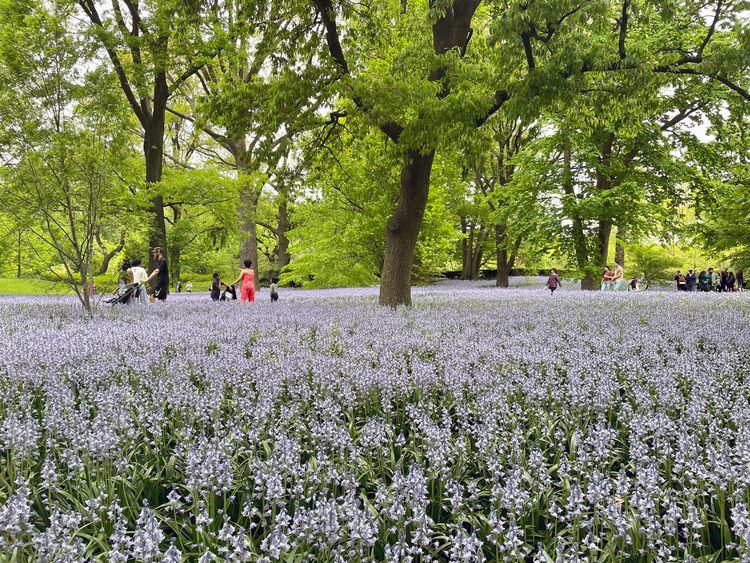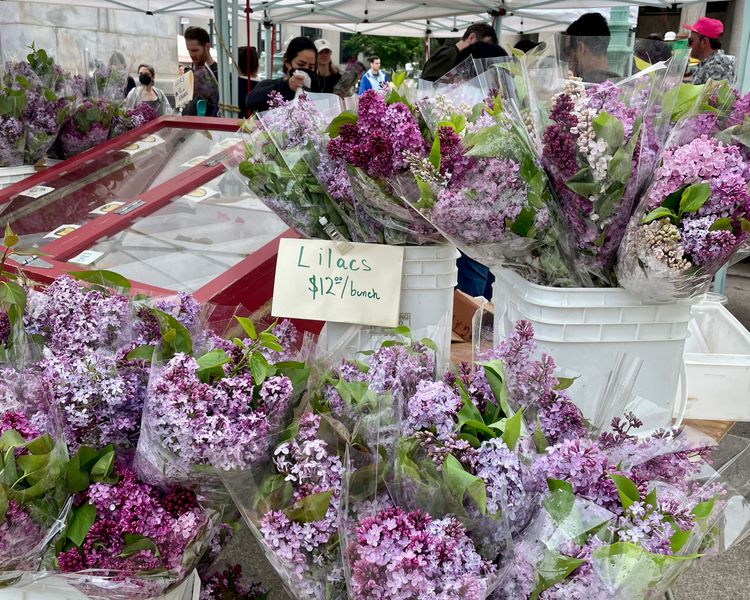The Great Tulip Bloom

While the early Dutch colonists were establishing their small settlement at the southern tip of Manhattan in the 1630s, the frenzy for propagating tulips in Holland was resulting in a multitude of showy colors and shapes. Little now survives of 17th-century New Amsterdam; some remains of the foundation of a 1670 tavern are preserved beneath plexiglass outside 85 Broad Street. Stone Street still follows the same curving path as when it was called Hoogh (High) Street. But each spring Tulipomania still takes the city with kaleidoscopic blooms.
Around 20,000 tulips flourish in the Conservatory Garden of Central Park, while the West Side Community Garden annually holds a Tulip Festival to celebrate its over 13,000 bulbs. Window boxes burst with blossoms in maroon, orange, purple, red, yellow, and white; eager hands carry bouquets of stripes and mottled hues from the greenmarkets. At Rockefeller Center, there are bright pops of color from the tulips at the Channel Gardens, themselves a reminder of another era of the city. Once this was the site of the first botanical garden in the country: the Elgin Botanic Garden established in 1801 by botanist David Hosack. It only lasted until 1811, showcasing wondrous flora from across the world in a conservatory and hothouses, from hibiscus flowers to citrus trees.
Now with the Midtown towers on all sides, there is little greenery in its former home, but every spring the tulips that bloom alongside the Channel Gardens’ six pools recall the Dutch roots of the city and this lost garden. Take a moment to pause next to any tulips that cross your path. Remember all the layers of time below your feet.

- Stop by the Cooper Hewitt to see how Tulipomania got into Dutch design with a 17th-century cabinet whose marquetry features striated tulips—caused by a “tulip breaking virus”—that were among the most in-demand bulbs. Prices raged so high that commissioning a still life of a “broken tulip” from trendy artist Jan van Huysum would have cost about 400 guilders less than purchasing a single Admiral van Enkhuijsen bulb (5,400 guilders, or well over $300,000 in today’s money).
- At LaGuardia Place and West Houston Street, you can find a reminder of another lost era of nature. Artist Alan Sonfist’s “Time Landscape” was planted in 1978 to remember the precolonial landscapes of the city. He wrote in 1968: “As in war monuments that record the life and death of soldiers, the life and death of natural phenomena such as rivers, springs, and natural outcroppings need to be remembered.”
- Botanical crazes have sprouted in New York via other forms of flora. Pteridomania (or fern fever) crossed the Atlantic from London and How To Know the Ferns by NY botanist Frances Theodora Parsons was an influential tome from 1899. A Victorian violet frenzy was inflamed by the floral farms of Rhinebeck and Dutchess County (the “violet belt”), which shipped millions of purple blossoms down the Hudson for New Yorkers’ nosegay needs. In 1926, the Broadway production The Captive presented violets as a symbol of lesbian love (and was shut down by the vice squad). Pick up a pack of classic NYC confection Choward’s Violet Mints and let the chalky taste of spring slowly fade on your tongue.




